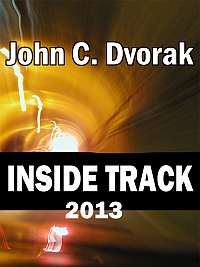
The Hayabusa probe is slowly closing in on a distant asteroid named Itokawa. Within a few months, after surveying the asteroid thoroughly from a safe distance, Hayabusa will swoop down to its surface and grab samples of the dirt for return to Earth, like a spacefaring bird of prey. In fact, the spacecraft’s name comes from the Japanese word for “peregrine falcon.”
Already closer to the asteroid than the distance between Earth and its moon, Hayabusa is approaching at a relative speed of 225 mph (100 meters per second) and is firing its gentle but exceedingly persistent engine to further slow its speed.
The probe uses an ion-drive system pioneered by NASA’s Deep Space 1 comet scout, but with a distinctive design innovation. It is the first probe to use microwaves to ionize the xenon fuel. Through electrostatic deflection — like charges repel each other — the four engines can produce a slow-but-steady gain or loss in total speed amounting to as much as 27 mph (12 meters per second) per day.
Hayabusa is aimed at a small piece of space debris once known as “Asteroid 1998 SF36” — signifying that it was discovered only a few years ago and was too small for anybody to bother to name. But once it had been selected as a sampling target, the International Astronomical Union acceded to Japan’s request to name it after Hideo Itokawa, the father of Japanese rocketry.
The potato-shaped asteroid measures about a quarter-mile (500 meters) wide, with a gravitational pull hardly more than a millionth of Earth’s. Itokawa’s gravity is so faint that the probe won’t even bother to orbit the asteroid. Instead, it will hover about 12 miles (20 kilometers) away, surveying the surface both from the full sunlit side and then later from above the boundary between day and night.
After several weeks of surveying, the probe would begin its main task: retrieving about a gram (0.036 ounce) of dirt from up to three points on the surface, and then returning the samples to Earth two years later. The probe is too far away for real-time remote control from Earth, so to perform this delicate operation the probe has a sophisticated autopilot.
Assuming the craft’s power system and four ion engines continue to function, the craft will return to Earth in July 2007. A special capsule will hit the atmosphere at 29,000 mph (13 kilometers per second), about the same speed as returning Apollo spacecraft, and undergo forces of about 25 G’s before touching down in central Australia.
Reflect for a minute on the complexity built into the software running that autopilot. Phew!















With complexity like that…. why does windows crash?
I bet it’s a version of unix!
Who reboots that thing?
Chris
It’s not an asteroid. It’s a giant robot!
If this goes through it’ll be the first sample of another celestial body brought to Earth since the moon rocks brought by the Apollo astronauts. Hopefully full bio-containment measures will be used when it returns to Earth…
i like your blog. it is a very interesting one. port abuayar: http://anthony.ianniciello.net/blog/archives/000079.html , extensive methods for this